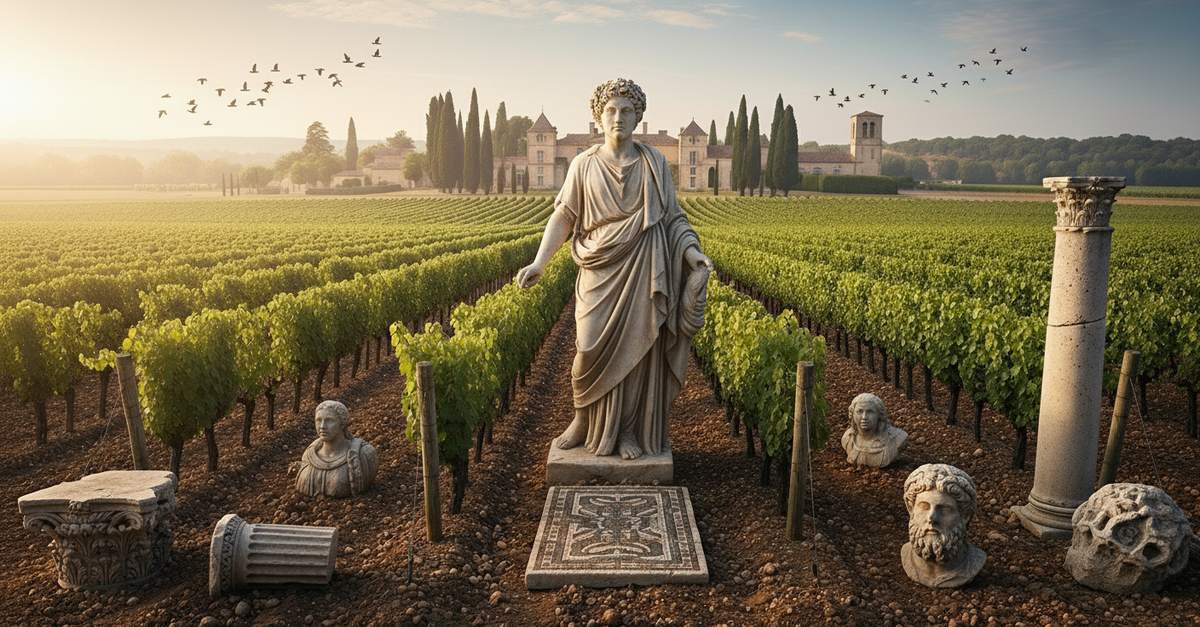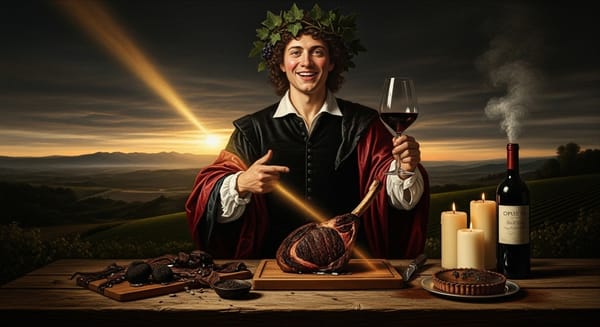The Rebel Saint: How Château Figeac Redefined the Spirit of Saint-Émilion
Explore the story of Château Figeac — a Bordeaux icon rooted in Roman history and defined by rebellion. With Cabernet structure, Merlot warmth, and timeless grace, it redefined Saint-Émilion and rose to Premier Grand Cru Classé “A” status.

Born of Roman roots and Médoc dreams, this legendary Right Bank estate forged its own path to greatness — with elegance, audacity, and timeless grace.
A Vineyard Older Than Bordeaux Itself
Before there was Bordeaux as the world knows it — before the Medoc marshes were drained, before Saint-Émilion’s limestone slopes became sacred ground — there was Figeacus.
I remember it well. In the 2nd century, a Roman nobleman named Figeacus (or Figeacusus, as the chroniclers sometimes called him) established a villa on this very spot. He planted vines in the gravelly soils that rolled gently toward what would one day become Saint-Émilion, drawn by their perfect drainage and sunlit exposure. Those first vines were humble, but the land — a unique mix of gravel, clay, and iron-rich sand — was extraordinary.
For two millennia, it has remained so. Few vineyards in the world can trace their origins so far back. Fewer still have shaped their destiny with such deliberate independence.
A Saint-Émilion Unlike Any Other
By the 18th century, Château Figeac had evolved from Roman villa to noble estate, its wines already prized across France and beyond. But it was in the 19th century that Figeac’s character truly crystallized. Purchased by the Manoncourt family, the château began a transformation that would set it apart from every other estate in Saint-Émilion.
This was a region dominated by Merlot — soft, plush, and plummy, the grape that made Saint-Émilion famous for its voluptuous style. But Figeac looked westward, to the gravel-rich soils of the Médoc. Those pebbly ridges, rare on the Right Bank, spoke a different language — one better suited to Cabernet Sauvignon and Cabernet Franc. And so, while its neighbors planted Merlot in abundance, Figeac chose a bold path: a blend that leaned heavily on the two Cabernets.
The result was — and remains — singular: a Saint-Émilion with Left Bank structure and precision, layered over Right Bank depth and warmth. It was a wine that spoke in two dialects at once — a bridge between Bordeaux’s twin souls.
The Manoncourt Vision: Terroir Above All
If the land shaped Figeac, it was the Manoncourt family — and above all, the visionary Thierry Manoncourt — who gave it purpose. Taking over in the mid-20th century, Thierry transformed Figeac into one of Bordeaux’s most forward-thinking estates. He championed rigorous vineyard management, low yields, and an obsessive focus on soil health and biodiversity — long before these practices were fashionable.
He also doubled down on the estate’s unique identity. Rather than chasing trends or mimicking neighbors, Figeac leaned into its individuality — crafting wines that prioritized freshness, elegance, and longevity over sheer power. Under Manoncourt’s stewardship, Figeac became a beacon of balance — a wine that was simultaneously classic and innovative, rooted in tradition yet constantly evolving.
It is no exaggeration to say that Thierry Manoncourt helped define what the modern Right Bank could be. His influence extended far beyond Figeac, inspiring a new generation of Bordeaux winemakers to embrace terroir rather than formula.
A Château in Constant Dialogue with Time
The story of Château Figeac is not one of static tradition. It is a story of evolution — a constant dialogue between past and future. Over the decades, the estate has continued to refine its practices: replanting vineyards parcel by parcel, investing in state-of-the-art cellars, and conducting exhaustive soil studies to ensure each grape variety is perfectly matched to its terroir.
In 2013, the château embarked on one of its most ambitious projects yet: the construction of a new gravity-fed winery, designed to bring even greater precision to its winemaking. The architecture blends seamlessly into the landscape — a testament to Figeac’s philosophy of harmony between human craft and natural environment.
The results speak for themselves. In 2022, Château Figeac was elevated to Premier Grand Cru Classé “A” status — the highest honor in Saint-Émilion, shared by only a handful of estates. It was not a surprise. It was a coronation long overdue.
The Wines: Elegance Forged in Complexity
To taste Château Figeac is to taste paradox harmonized. Its Cabernet Sauvignon brings structure, graphite, and length. Cabernet Franc adds aromatic lift, spice, and floral grace. Merlot — though the minority — contributes plushness and mid-palate depth. Together, they create wines that are not showy but symphonic: layered, nuanced, and profoundly age-worthy.
Figeac’s hallmark is balance. Even in hot vintages, the wines retain freshness. Even in their youth, they whisper of longevity. Aromas of cassis, violets, tobacco, and cedar unfold slowly, evolving over hours — and over decades — into something transcendent.
To open an old bottle of Figeac is to open a time capsule. It is to taste the Roman villa, the gravel soils, the vision of Thierry Manoncourt — and the enduring spirit of a château that has always refused to be defined by anything but itself.
Liber’s Reflection: The Saint Who Refused to Conform
I, Liber, have walked through Bordeaux’s great châteaux — through the opulence of the Left Bank and the warmth of the Right. But Château Figeac has always held my gaze a little longer. It is not just its age, though it predates almost everything around it. It is not just its terroir, though it is among the most singular in Bordeaux.
It is its soul — rebellious, independent, utterly confident in its own identity. In a region where tradition often hardens into orthodoxy, Figeac chose evolution. Where others chased power, it pursued grace. Where others sought recognition, it built a legacy.
Figeac is proof that greatness does not come from imitation. It comes from listening — to the soil, to history, to one’s own nature — and having the courage to follow that voice wherever it leads.
And so I raise my glass — not to a château that follows the rules, but to one that rewrites them. 🍷✨





